Tank to the toilet: 4 common problems and how to eliminate
The shape, size and internal structure of the toilet bowl installed in the toilet influences the convenience of its use. But the efficiency of removal of biological waste and cleaning of the walls of ceramics from residues of feces depends on the quality of the drain and the health of the drainage tank. Therefore, if you have broken the toilet bowl, you need to immediately eliminate the problem. How to do it yourself without the involvement of the master - read below.
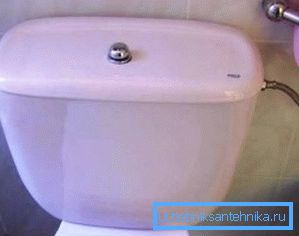
Internal device of drain capacity
To understand why the toilet bowl is not filled or the water from it constantly falls into the bowl, it will not be out of place to find out how this part of the sanitary fixture is arranged.
Any storage tank, regardless of design and location, consists of the following parts:
- shells –With a ceramic (porcelain or earthenware), metal, plastic and so on;
- covers –Installed on the upper part of the tank and serves to provide access to internal parts and mechanisms;
- trigger button or lever - with their help, the internal mechanisms that are responsible for the descent of water into the bowl and filling the tank with water from the aqueduct are actuated.
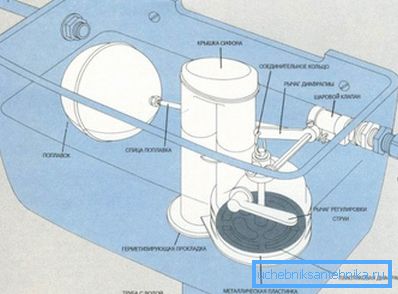
Note! Water tank is usually made of fragile material. Therefore, with careless handling may collapse. If you have cracked the toilet bowl, it is impractical to repair it, as it is unlikely to achieve complete tightness. It is better to immediately buy a new one. Although its price is quite high, the only way you are 100% safe from the flood.
Elimination of breakage of the tank
Problem 1. Water overflow
Many users often face the problem of continuous flow of fluid into the storage tank. Immediately it should be said that if your toilet bowl overflows, the problem lies in the faulty toilet float valve that controls the water supply.
Consider the problem in more detail:
- The valve is skewed. Most often it is because of this that the toilet bowl fills poorly, although solving the problem is as simple as possible: you just need to open the lid and adjust the lever.
- Damaged float. As a rule, it is made of thin-walled plastic, which can lose tightness and allow water inside. As a temporary measure, you can wrap the float with several layers of cellophane and secure them with an elastic band, but it is better to replace it. In fairness it should be noted that such a nuisance is extremely rare.
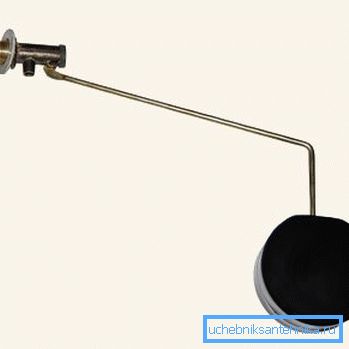
- Faulty valve itself. In this case, in any case, you will need a replacement, for which you should stock up in advance with a repair kit.
The instruction describing the work process consists of several points:
- shut off the stop valves of the water supply system, then empty the drainage tank;
- unscrew the flexible hose or rigid tube connecting the water pipe to the tank;
- unscrew the lever connecting the valve with the float;
- unscrew the two nuts from the inside and outside, holding the nozzle in the hole of the tank;
- remove the valve and replace it with a new one from the repair kit;
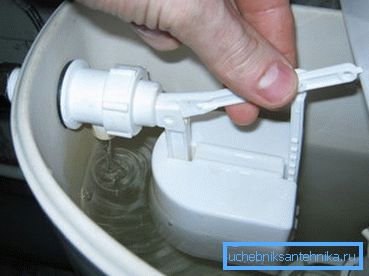
Tip! It is better to use the same nuts that were installed earlier. So the knot will be more reliable and tight.
- reassemble, then turn on the water;
- as the tank is filled, adjust the position of the float and, accordingly, the level of the liquid.
Problem 2. Non-filling with water
Often during the operation of the toilet bowl, you can face the exact opposite problem - stopping the supply of water to the drainage tank.
Naturally, you first need to check the health of the entire plumbing system, but if in the kitchen the fluid from the tap continues to flow, then the reason should be sought elsewhere:
- Faulty supply hose. Diagnostics is performed as follows: the valve of the stop valves is shut off, the part is unscrewed from the branch pipe, after which, placing its end in the bucket, the water supply resumes. If it starts flowing, everything is fine with the hose and the reason should be sought elsewhere. Otherwise, simply replace the supply pipe with a new one.
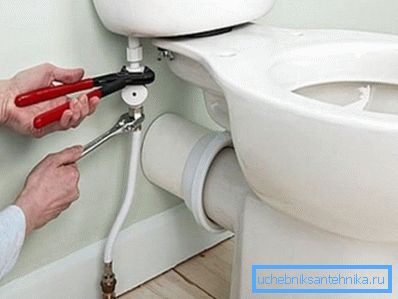
- Clogged intake manifold. This is often the case if repairs were carried out on a section of the water supply system and trash, sand, rust, and so on got into the engineering network. To eliminate, you must first try to clean the nozzle with a screwdriver or an awl. If a positive result could not be achieved, it remains only to replace the damaged part.
Tip! To avoid clogging, you can protect the water supply pipe from debris from entering with a special oblique valve that is installed on the pipe to the stop valves.

- Incorrect valve operation. The procedure for eliminating such a malfunction is described in the previous section.
Problem 3. Continuous flow of water into the bowl
The third common failure - the continuous flow of a small amount of water in the bowl of the toilet. The culprit is a rubber or silicone membrane siphon drain fittings. It can be washed, but it is better to replace it so that in the near future it will not encounter a similar problem again.
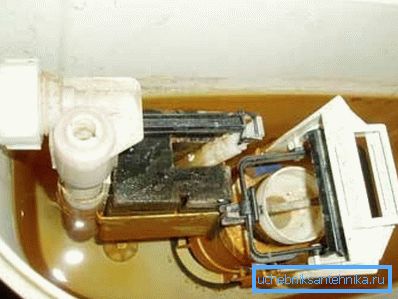
Tip! Together with the membrane, it is desirable to replace the plastic liner in the toilet bowl. Especially since they are often sold in the kit. In this case, the fit will be as tight as possible, and the repair will be 100% effective.
Replacement is as follows:
- The lid of the container is removed, after which a wooden lath is placed between the two long walls, to which the stringer is tied up with a float lever.
- The flow of water to the tank is blocked, and the liquid in the latter is drained.
- The nut, which holds the drain pipe, is unscrewed, after which the mounting of the siphon is loosened and it is removed. Do not forget to disconnect it at the same time from the lever of the float valve.
- The old membrane together with the plastic liner is removed, and new parts are put on the vacant space.
- It remains only to put all the parts together, let the water run and adjust the position of the float.
Problem 4. Loss of tightness of sealing washers
As you know, the drain tank is attached to a special shelf in the back of the toilet bowl with special bolts. To avoid water leaks in this place, the fastener hardware heads are equipped with special rubber seals. Over time, under the action of salts dissolved in water, rubber can lose its elasticity, which will cause water leaks.
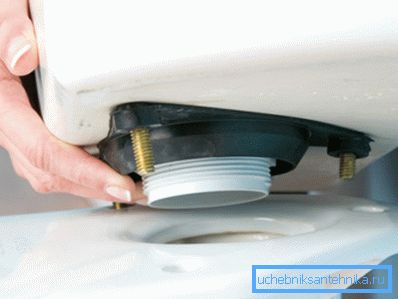
The problem, as in other cases, is solved by replacement. To do this, you need to buy bolts with washers and plastic nuts that are suitable in length.
The scheme is as follows:
- with the help of a tap on the water pipe, the flow of the liquid to the storage tank of the toilet bowl is blocked;
- water is drained to allow access to the fixing accessories;
- the drain fittings installed in the tank are dismantled (at the same time you can make a revision of its condition and replace the gaskets that have fallen into disrepair);
- old fasteners that hold the tank on the toilet bowl are removed (both must be changed, even if the tightness has lost one of them);
- the container is removed from the shelf, cleaning of the ceramic surface is performed;
- also replace the gum between the cistern and the toilet;
- sealing elements are coated with silicone gel, the container is put in place, then bolted;
- Do not tighten the nuts too much, as this may damage the fragile ceramics of the device;
- reassembly is performed - a drain mechanism is installed, water is opened, the float is adjusted.
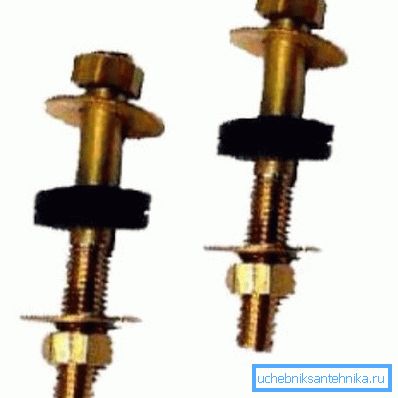
When the repair is complete, observe the plumbing fixture for several days. Sometimes a leak may appear after some time has passed since the replacement. If that happens, simply tighten the nuts again.
Tip! To avoid the damaging effects of corrosion, it is advisable to buy bolts made of stainless steel or brass. They cost a little more, but the benefits will not make you disappointed.
Conclusion
If you do not fill up, overfill, or let the toilet bowl pass through - you should not call the plumber from the housing office, wait for it for a long time, and then pay for quite expensive services. You can equip yourself with the knowledge given above and do all the work yourself. For more on this, see the video in this article.